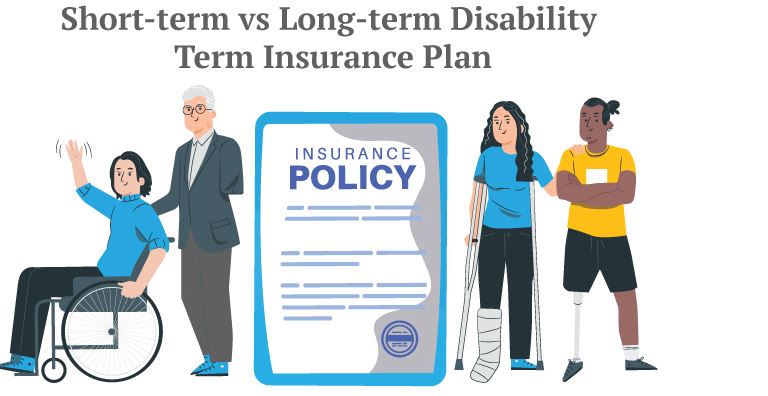Disability insurance is intended to replace a percentage of your income in the event that you suffer an injury that prevents you from working. Policies differ greatly in that they provide a range of benefits and coverage alternatives. The main elements of disability insurance plans are covered in this section, along with their significance for financial planning.
Types of Disability Insurance Policies

- Short-Term:covers conditions that limit your ability to work for a brief amount of time, typically up to six months. During this time, benefits usually replace a portion of your salary.
- Long-Term Disability Insurance:covers impairments that last longer than six months and may extend to retirement age. The goal of benefits is to replace a sizable percentage of your income so that you can continue to live comfortably.
Key Features of Disability Insurance Policies
Definition of Disability: Different policies’ definitions of disability affect when benefits are awarded. Certain policies stipulate that you must be unable to work in your current capacity, while others might provide benefits even if you are unable to work in any capacity.Different policies’ definitions of disability affect when benefits are awarded. Certain policies stipulate that you must be unable to work in your current capacity, while others might provide benefits even if you are unable to work in any capacity.
- Benefit Amount:The amount of your income that will be replaced if you become handicapped is specified by policy. It is essential to comprehend this sum in order to evaluate your financial requirements while on incapacity.
- Elimination Period:The elimination period is the amount of time that must pass before benefits begin. Shorter elimination periods generally result in higher premiums but faster benefit availability.
Factors to Consider When Choosing Disability Insurance Policies

Income Replacement Needs
Determine how much replacement income you would require in the event that a disability prevented you from working. Think about your present spending and financial commitment.
Policy Exclusions and Limitations
Recognize the types of disabilities that are covered and any exclusions that might be relevant, such as high-risk activities or pre-existing conditions.
Premiums and Affordability
Recognize the types of disabilities that are covered and any exclusions that might be relevant, such as high-risk activities or pre-existing conditions.
Choosing the Right Disability Insurance Policy
Evaluate Multiple Quotes
To evaluate policy features, prices, and coverage options, get quotations from many insurance companies.
Read Policy Details Carefully
Examine the fine language of every insurance, taking note of the exclusions, elimination periods, benefit amounts, and definitions of disability.
Consult with an Insurance Adviser
Consult a financial planner or insurance advisor with experience in disability insurance. They can assist in determining your needs and provide appropriate policies.
Conclusion
It is essential to comprehend disability insurance policies in order to protect your financial future in the event of a disability. Through an assessment of policy types, features, and considerations for selecting coverage, people can make well-informed decisions to safeguard their income and preserve financial stability in trying times.



